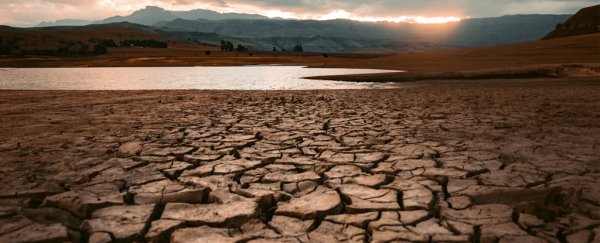The Northern Hemisphere just had its hottest summer on record since 1880, according to National Oceanic and Atmospheric Administration data released Monday.
NOAA found the average global surface temperature taken by thousands of thermometers, buoys and other sensors on land and sea tied with that of 2016 for the top spot, with a temperature anomaly of 2.03 degrees (1.13 Celsius) above the 20th-century average.
In addition, August was the world's second-hottest such month, according to both NOAA and NASA, with unusually hot conditions seen from pole to pole and across every ocean.
What's remarkable about 2019′s record warmth is that it comes in the absence of a strong El Niño event in the tropical Pacific Ocean. Such events tend to boost global temperatures by warming the seas and sending more heat into the atmosphere.
Instead, a weak El Niño has been present at times during 2019 but nothing like what occurred in 2016, which was the last time a Northern Hemisphere summer was this warm.
As global average temperatures continue to rise in response to increasing levels of human-produced greenhouse gases, it is becoming easier to exceed climate benchmarks even without strong El Niño events.
For example, according to NOAA, the five hottest summers in the Northern Hemisphere have each occurred during the past five years.
This summer featured unusual events that are symptomatic of a rapidly warming planet.
There was a brutal heat wave across Europe in July that established new national high temperature records and broke Paris's all-time hottest temperature. In addition, Arctic sea ice plummeted to the second-lowest level on record for the month of August.
Furthermore, the Arctic was ablaze, from the boreal forests of Alaska and Canada to the Siberian tundra and vast spruce forests, highlighting the possibility that the region could go from an absorber, or "sink," of carbon to a source of additional carbon dioxide emitted into the atmosphere.
The most notable temperature departures from average occurred across the north Pacific Ocean, where the "Blob" of unusually warm ocean waters has returned, as well as the Bering Sea, northern Canada, central Europe and northern Russia.
Western Canada, western Russia and parts of Indonesia were unusually cool for the season compared to the 1981-2010 average.
"Record high temperatures were observed across parts of the western coast of Alaska, the Bering Sea, western Pacific Ocean, Mexico, the Atlantic Ocean, western and southern Africa, northern Indian Ocean, and across parts of South America, Europe, and Asia. However, no land or ocean areas had a record-cold June-August temperature," NOAA found.
South America, Europe, Africa, the Gulf of Mexico and the Hawaiian region had a temperature departure from average for the summer months that ranked among the three warmest such periods on record. Africa, for example, had its warmest June-through-August period on record.
Globally, the June-through-August period was the second warmest such period on record with an average that was 1.67 degrees (0.93 Celsius) above the 20th-century average, NOAA found. This falls 0.04 degrees (0.02 Celsius) behind the same period in 2016.
Using some of the same data but separate methods of analysis, NASA found the Northern Hemisphere's summer months were the planet's warmest such period on record, beating out 2016 by a small margin.
In addition, NASA found the globe had a record warm June-through-August period. Differences in rankings, but similar overall global numbers and trends, are typical when comparing findings from the agencies that track Earth's warming climate.
According to NOAA, nine of the 10 highest June-through-August global land and ocean surface temperatures have occurred since 2009. The only Northern Hemisphere summer on that top 10 hottest list was in 1998, which also saw a "super El Niño."
Of course, summer in the Northern Hemisphere means it was winter in the Southern Hemisphere, but here, too, temperature were much warmer than average, tying with 2015 for the second-hottest winter temperature on record.
NOAA calculates that 2019 is likely to be between the second- and fourth-warmest year on record for the globe, with a near certainty of a top five warmest year.
2019 © The Washington Post
This article was originally published by The Washington Post.
